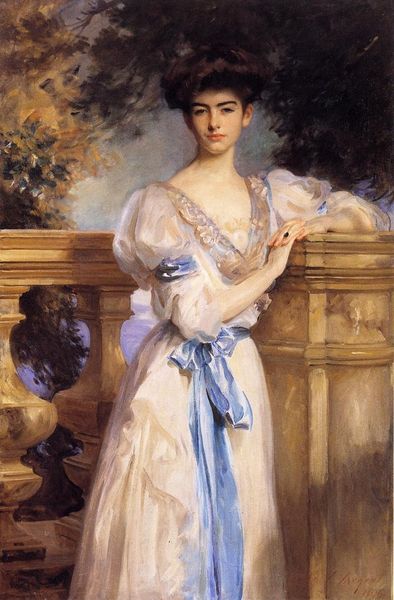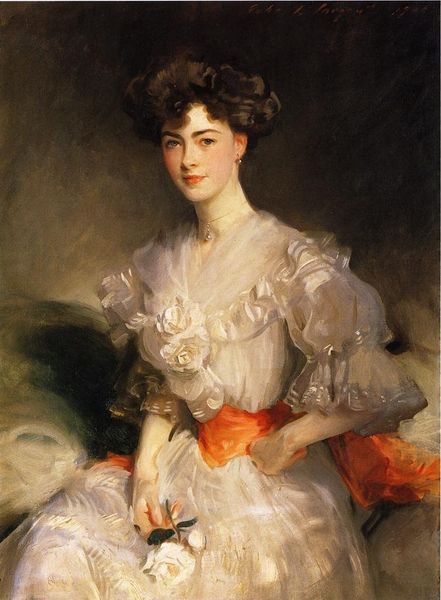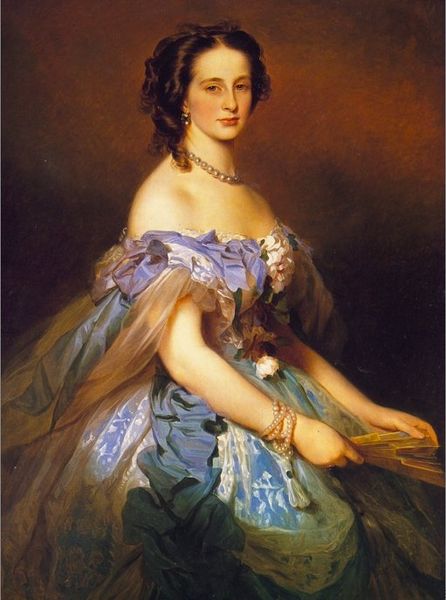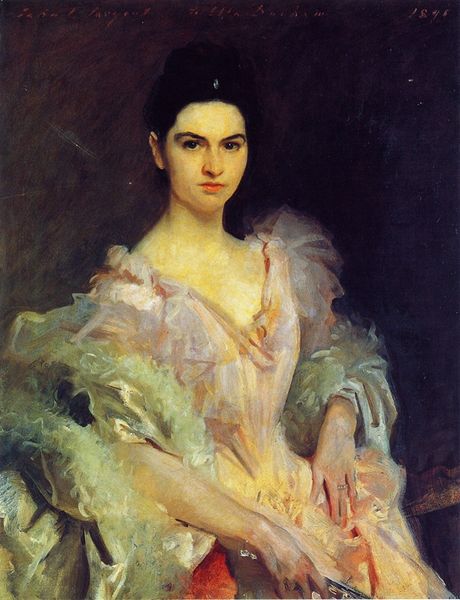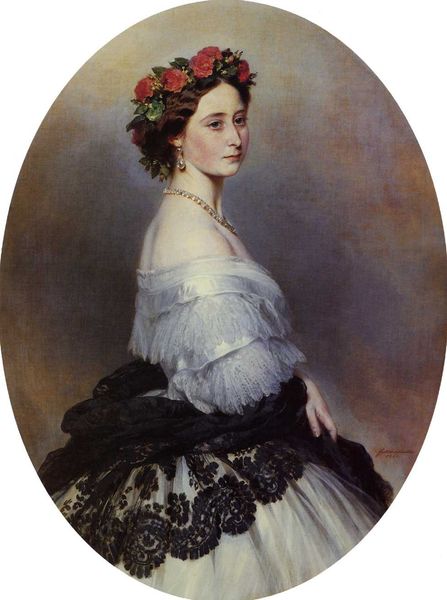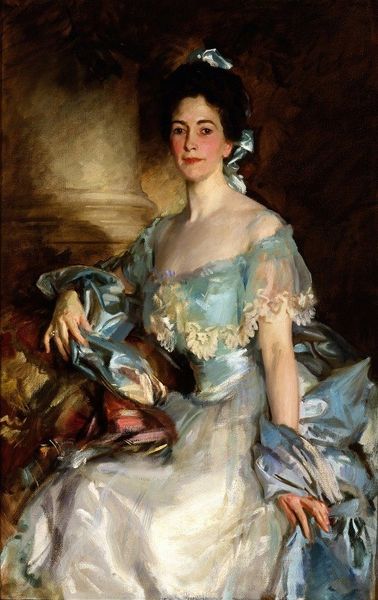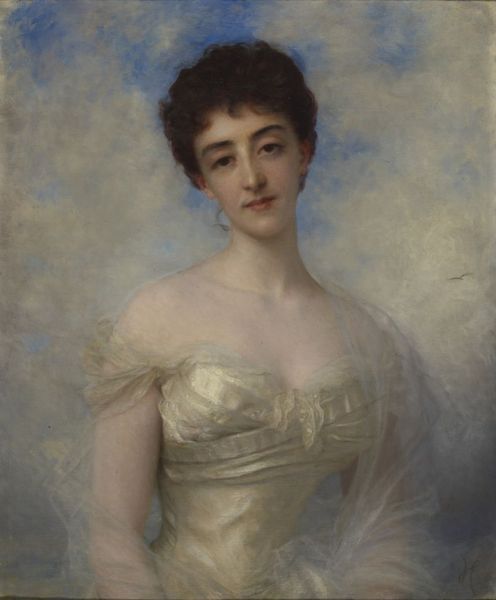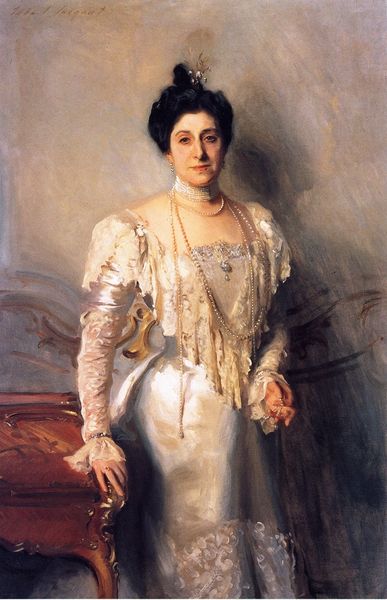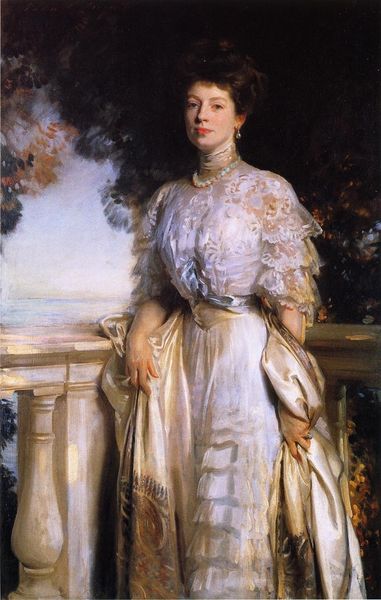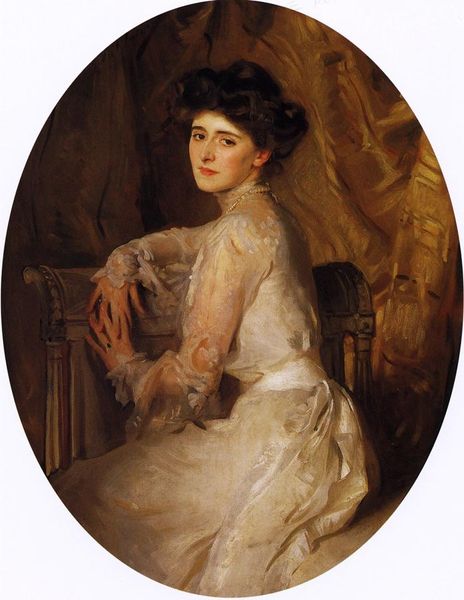
Copyright: Public domain
Editor: So, here we have John Singer Sargent's "The Countess of Essex," created around 1907. The medium appears to be oil paint. There's almost a hazy, ethereal quality to it. What do you see when you look at this portrait? Curator: I'm drawn to the visible brushstrokes and how they reveal the artist's process. Think about the labor involved. Sargent, embedded within a social elite, commodified his skill to produce these portraits for the upper classes. Notice how the texture of the paint almost mimics the texture of her gown. What does that say about his relationship to the subject, or even her consumption habits? Editor: That's interesting. I hadn't considered it as a kind of exchange or a commodity. Does the fact that it's oil paint itself contribute to this reading? Curator: Absolutely. Oil paint, with its versatility and ability to create such lifelike depictions, was a luxury in itself. It allowed Sargent to showcase not only the Countess’s likeness, but also the textures and materiality of her wealth. Consider how the rapid, expressive brushwork contrasts with the Countess's posed stillness. It speaks to both the speed of modern life and the constructed image of aristocracy. How does the backdrop contribute? Editor: It’s quite blurred, almost dreamlike, focusing attention solely on her. It's interesting you mention constructed images of aristocracy, making me think more critically about what Sargent’s brushstrokes and the very materiality are conveying. It certainly moves beyond just 'likeness'. Curator: Exactly. It’s a crafted representation that participates in a system of power and class. Consider what choices Sargent is making, the types of pigment he is purchasing. All these decisions build towards a portrait of material status. Editor: I see, it’s like the painting itself becomes a display of wealth and the means to represent it, too. Curator: Precisely. Examining the physical making helps unravel the layers of social meaning embedded within it.
Comments
No comments
Be the first to comment and join the conversation on the ultimate creative platform.
